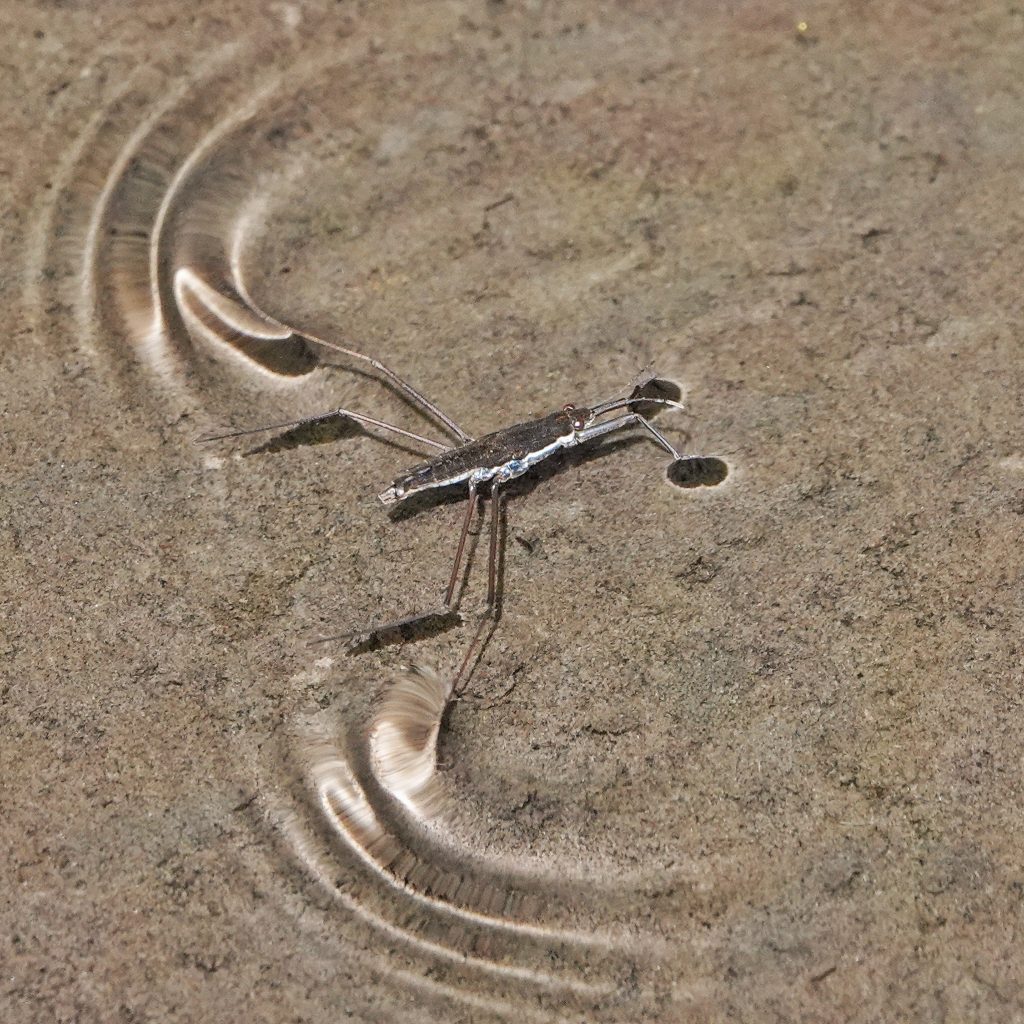
Anyone who has ever spent time around living water has seen water striders (also known as water skippers and Jesus bugs). They are always compelling to watch as they effortlessly walk on water, gliding around like skaters. I have known for quite some time that there were multiple species of water striders, and when I accidentally found a paper that identified the seven species in the family Gerridae that we have in our region, I decided to try to figure some of them out.
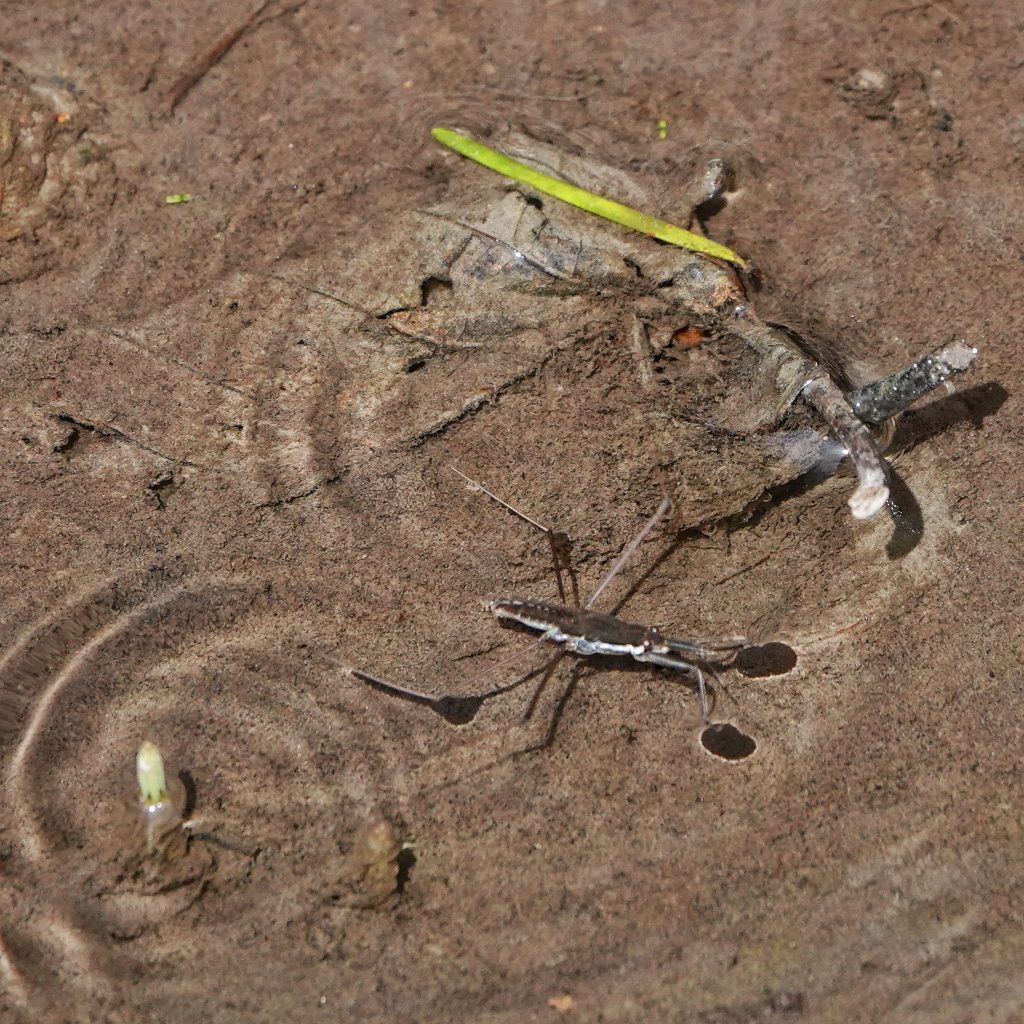
Water striders manage their ‘walking on water’ by virtue of the fact that their long legs spread out their weight, and the tibia and tarsi of their middle and rear legs (the ones they use for locomotion) are covered with fine, water resistant hairs that act as pontoons to keep them afloat on the surface film, and those legs have claws that can penetrate the surface film to give the water strider traction.
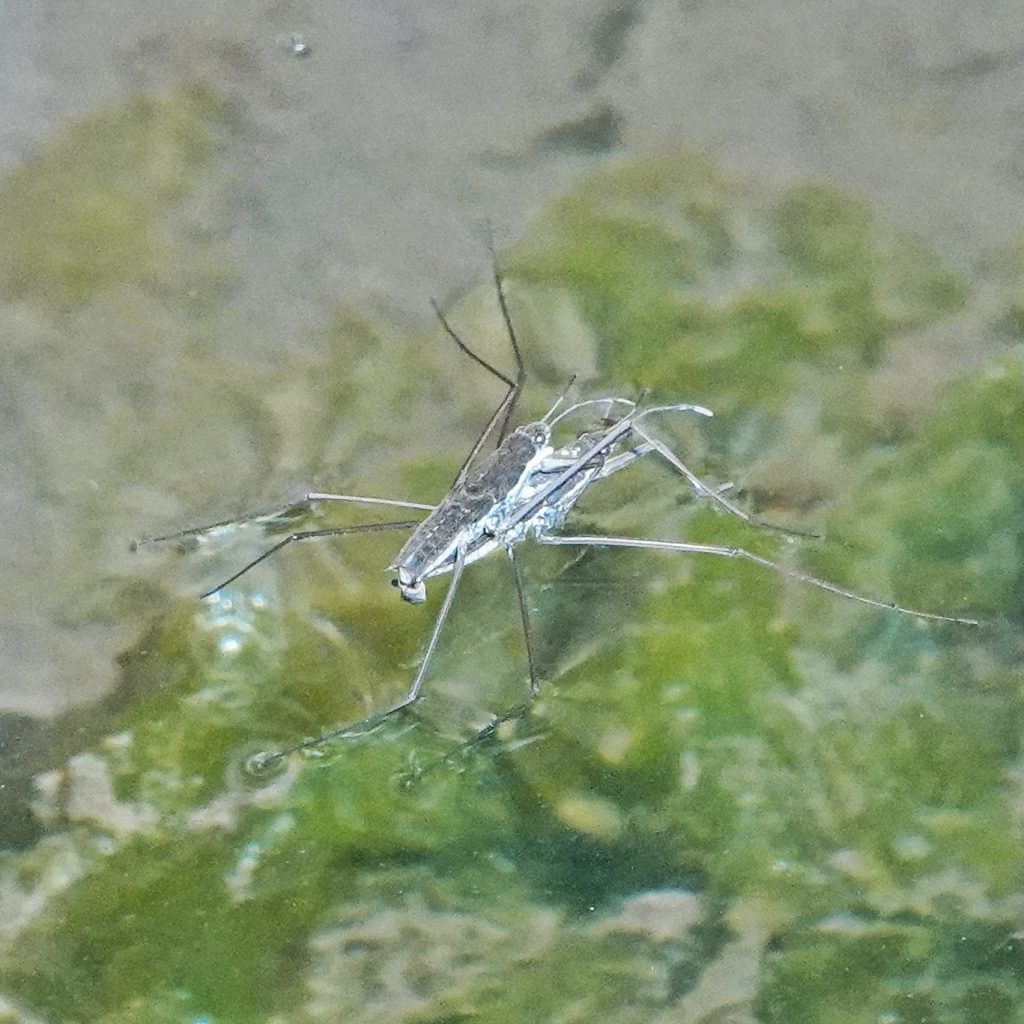
The only function the front legs have during locomotion is to support the body when the mid legs are rotating forward for another stroke, and their primary purpose is securing prey, after which the water strider inserts their serrated rostrum (a form of proboscis) into the prey, delivering digestive enzymes and then consuming the liquified nutrients. Water striders eat living and dead terrestrial insects from the surface film, and take subsurface prey (like mosquito larva) that must come to the surface to breathe.
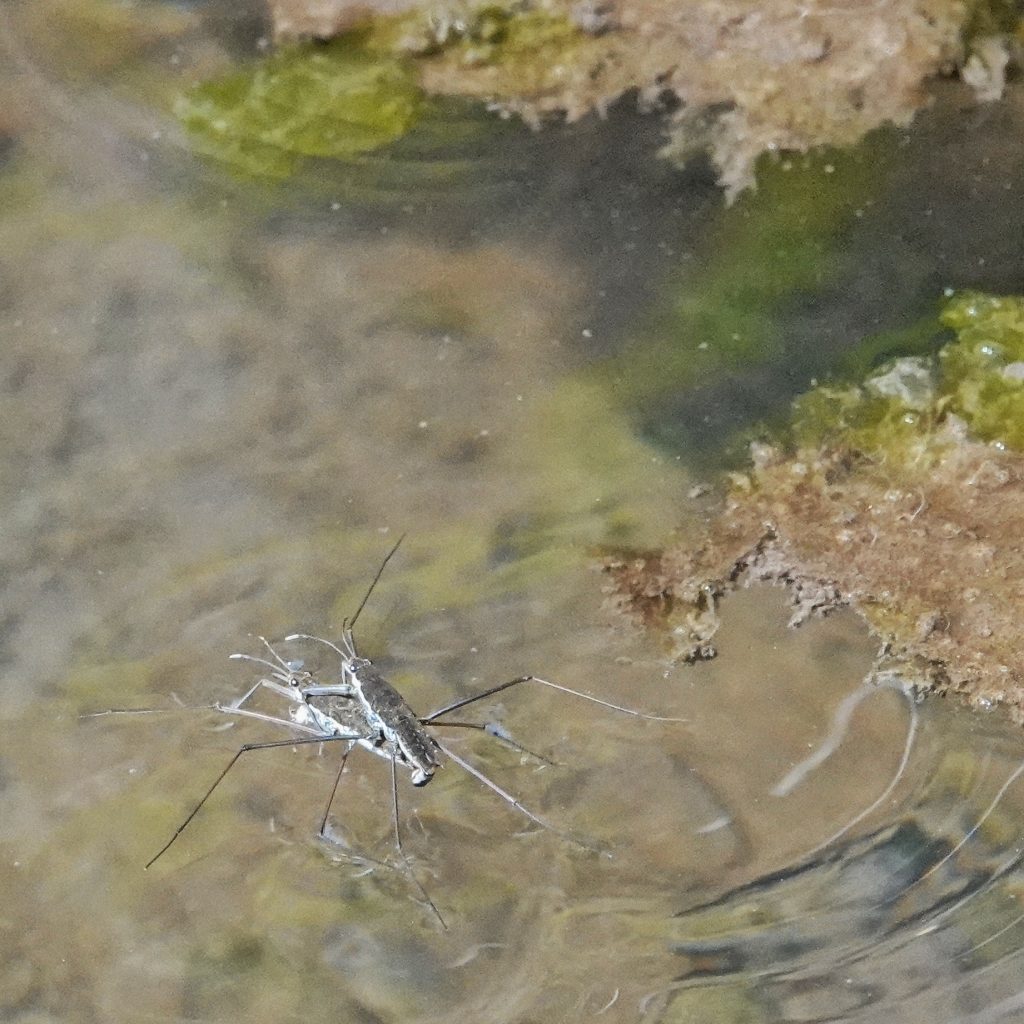
Water striders may have wings, a useful tool for dispersal from seasonal waters. Aquarius remigis has wing polymorphism, and full winged (macropterous), no winged (apterous), and partially winged (brachypterous) forms can all be found, although brachypterous forms are rare, and apterous forms are the most common. This is probably because most populations live on permanent water sources, and there is a negative trade off between ovarian production and wing formation. But apparently there is a genetic ‘switch’ which can be activated during the later instars, which will stimulate wing formation if conditions require it.
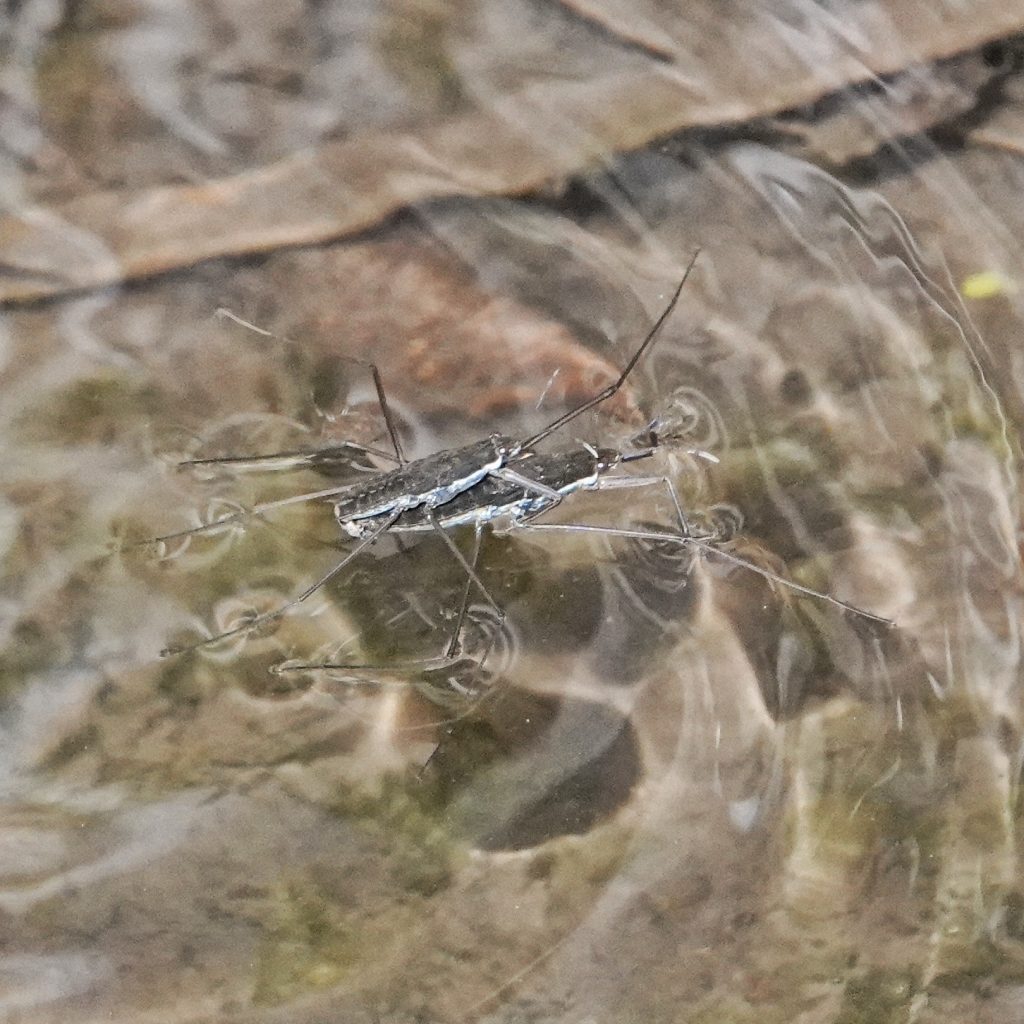
Water striders have dense, water resistant hair on their body that helps to keep them dry and afloat. However, once they are submerged they can have a difficult time breaking back through the surface film. They detect prey by interpreting the frequency of waves on the water, and also signal to potential mates by creating wave disturbances. Males are known to tap rapidly on the surface just before mating, and it’s possible that that is done to make the female more submissive, under the theory that it may attract predators to which she is more vulnerable due to her position in the coupling. If so, that is rude, dude!
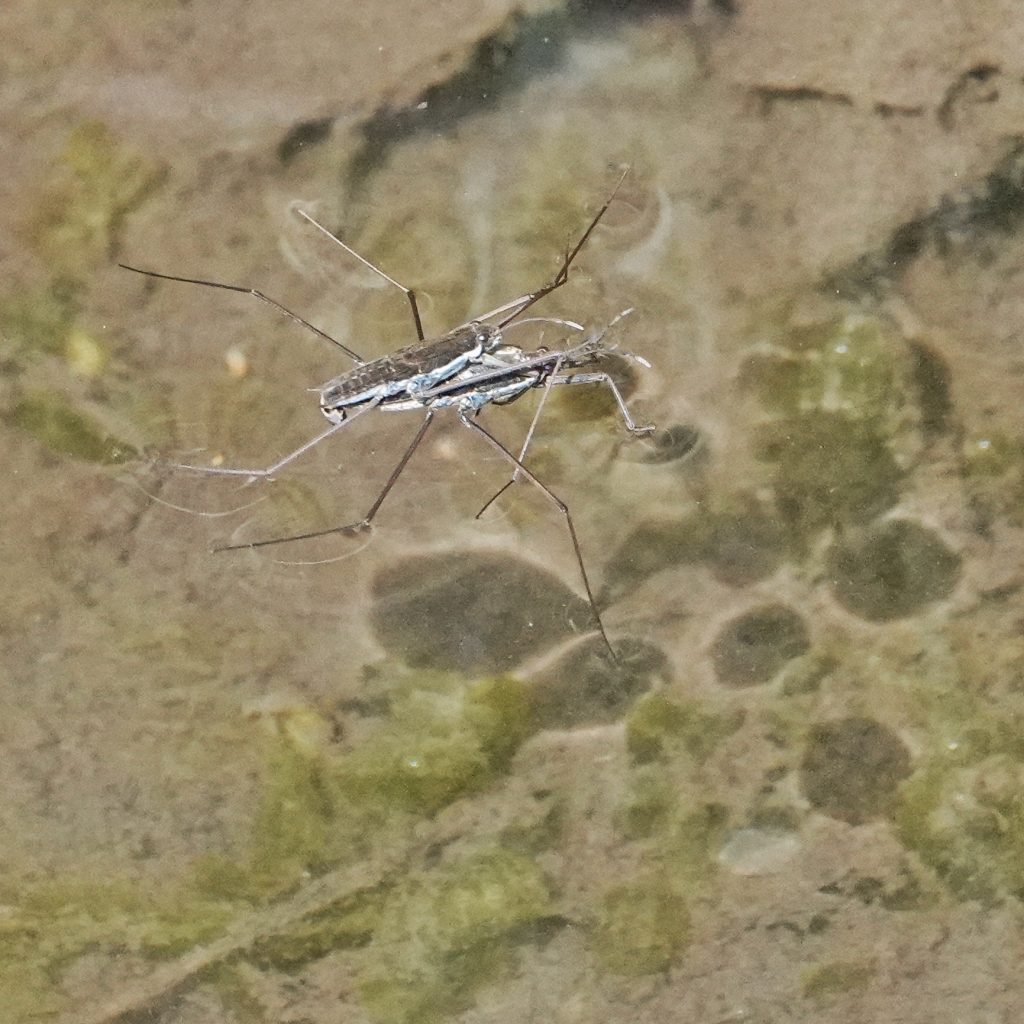
These are true bugs in the order Hemiptera, and the suborder Heteroptera, and Aquarius remigis is in the family Gerridae. There have been questions about the taxonomy of this species, and it was formerly a member of the genus Gerris. But the best current information places them in Aquarius, and synonymizes those in the PNW under the name A. remigis, though that may change after the molecular biologists get their hooks in them. They are the most common and widespread water strider in the PNW.
For a variety of reasons, most of which have to do with regulating my blood pressure and freeing up significant blocks of time, as of May 15 I will not be routinely sharing links to these posts in many of the Facebook groups to which I belong. I am sorry for the inconvenience, but anyone wishing to see new profiles after that date can friend and follow me on Facebook (all posts will be shared to my timeline/wall/page), or take advantage of the free subscription option on the website.
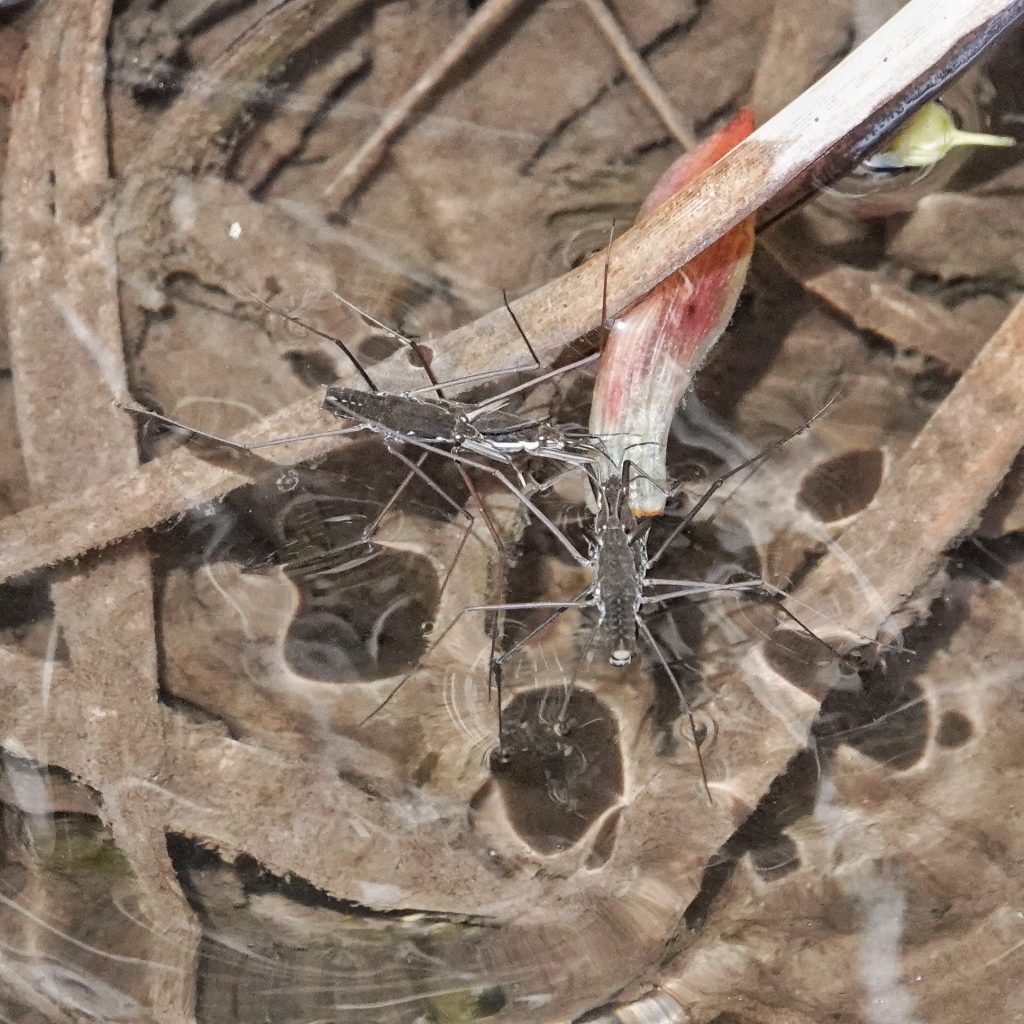
Description-Fairly large (body length 12.5-16.5mm) elongated, mostly brown water strider with a thin, light colored, broken line in the center of the abdomen, and tiny, light colored dashes at the lateral margin of each abdominal segment; the first antennal segment as long or longer than segments 2&3 combined; hind femora are longer than the abdomen; underside is greyish white, and should not be confused for a distinct white stripe on the lateral margin of the pronotum.
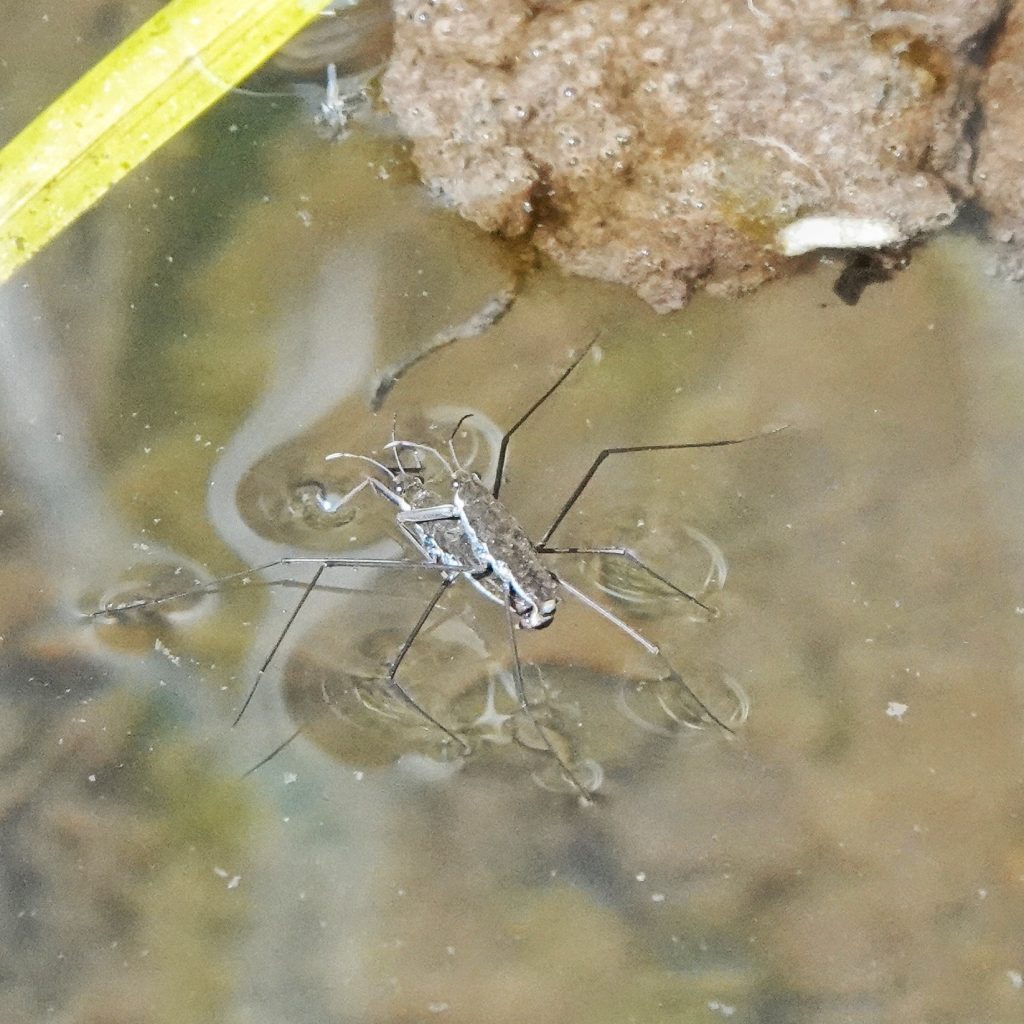
Similar species-Other Aquarius and Gerris are 11.5mm or less, and in our region all of them except G. incurvatus have a distinct white stripe on the lateral margin of the pronotum; Limnoporus notabilis has first antennal segment shorter than segments 2&3 combined, and may have a body length of up to 19.7mm; Metrobates trux infuscatus is seldom more than 4.6mm in body length, and is almost as wide as long;members of the family Veliidae have hind femora shorter than abdomen

Habitat-Found on still (lenticular) waters like ponds, lakes, and wetlands, and on the slower moving parts of moving (lotic) waters, such as creeks, rivers, and ditches.
Range-North and Central America; region wide in appropriate habitat in the PNW.
Eats-Both living and dead terrestrial insects that fall into the water, as well as aquatic insects that come to the surface; will engage in cannibalism during food shortages.
Eaten by-Frogs, Dytiscus beetles, fish, and birds are known to prey on them, although the distasteful secretions of the metathoracic scent glands probably limit their importance in the diet of any of these organisms. However, nymphs and those molting into adults lack such glands, and are therefore more susceptible to predation by organisms that haven’t previously experienced the distasteful adults.
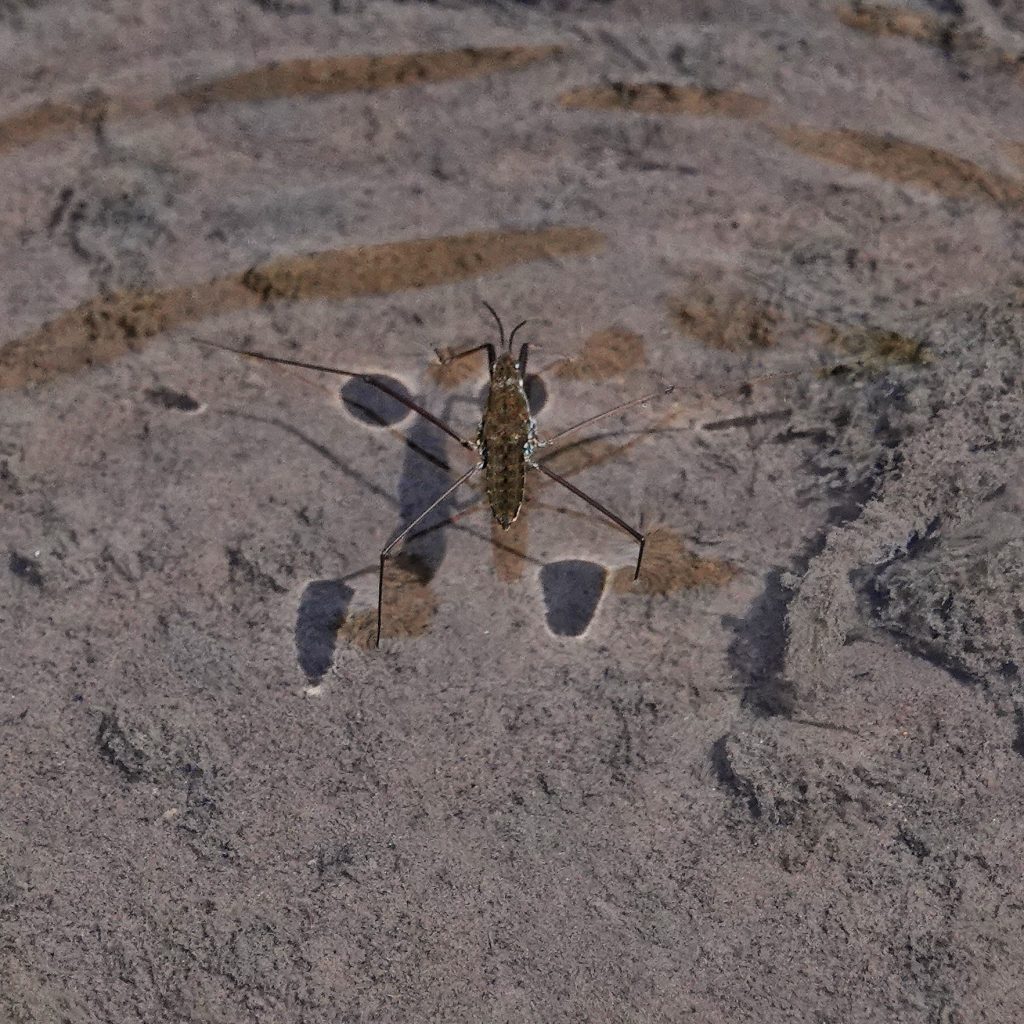
Adults active– Possibly year around, although they go into diapause when their habitat water freezes.
Life cycle-Eggs are laid on plant stems at the water’s edge, and on objects just below the surface, and incubation takes 1-2 weeks; they go through 5 nymphal stages (instars) before adulthood, which takes 3-6 weeks depending on air and water temperature; in our region they appear to have 1-3 broods per year, although each individual female only reproduces one per year; may live up to 18 months.
Etymology of names–Aquarius is from the Latin for ‘of water’, but whether this just refers to their habitat, or has connotations regarding the constellation, I cannot ascertain. The specific epithet remigis is from the Latin for ‘rowers’, an obvious reference to their means of locomotion.
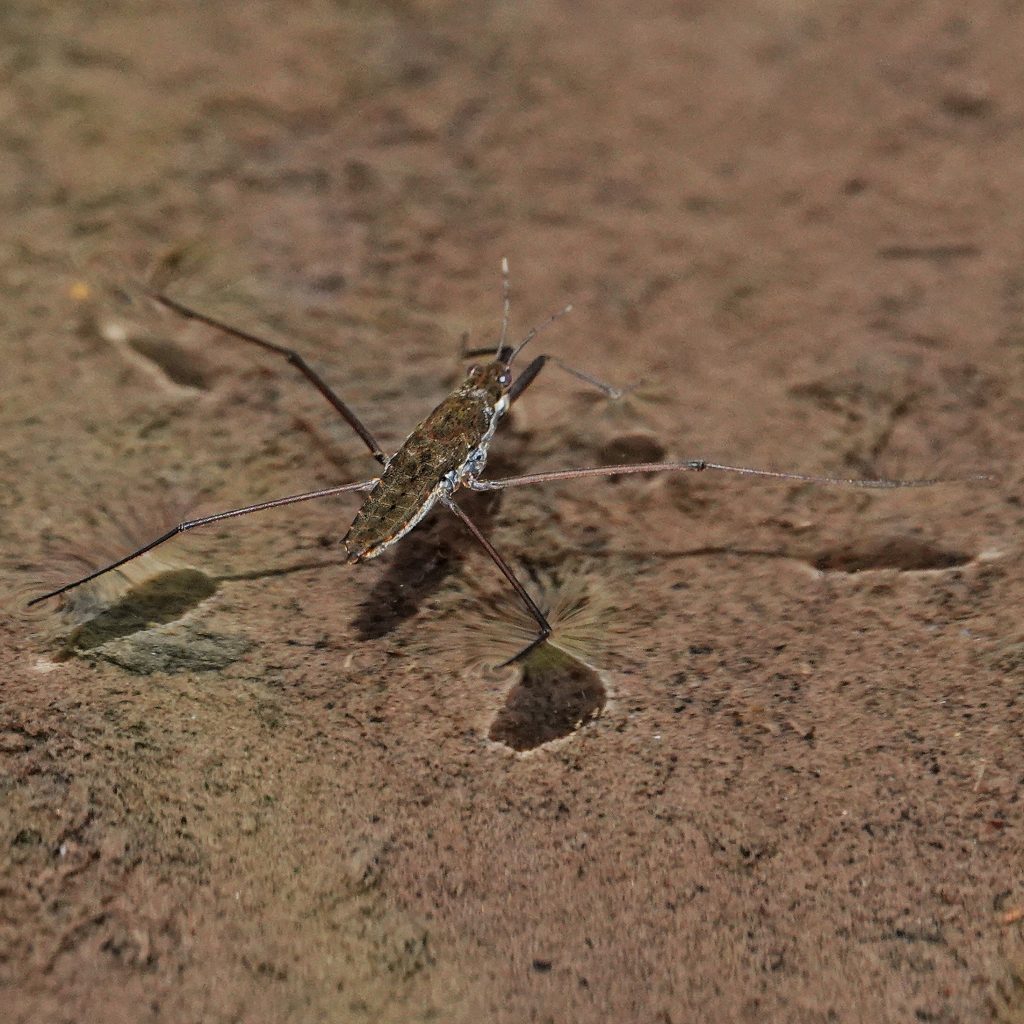
https://ir.library.oregonstate.edu/downloads/j9602208r?locale=en
https://bugguide.net/node/view/114657
https://www.jstor.org/stable/41712511
https://academic.oup.com/biolinnean/article/90/3/381/2701067
https://www.jstor.org/stable/2424392
https://www.jungledragon.com/specie/19831/common-water-strider.html
https://www.jstor.org/stable/41712511
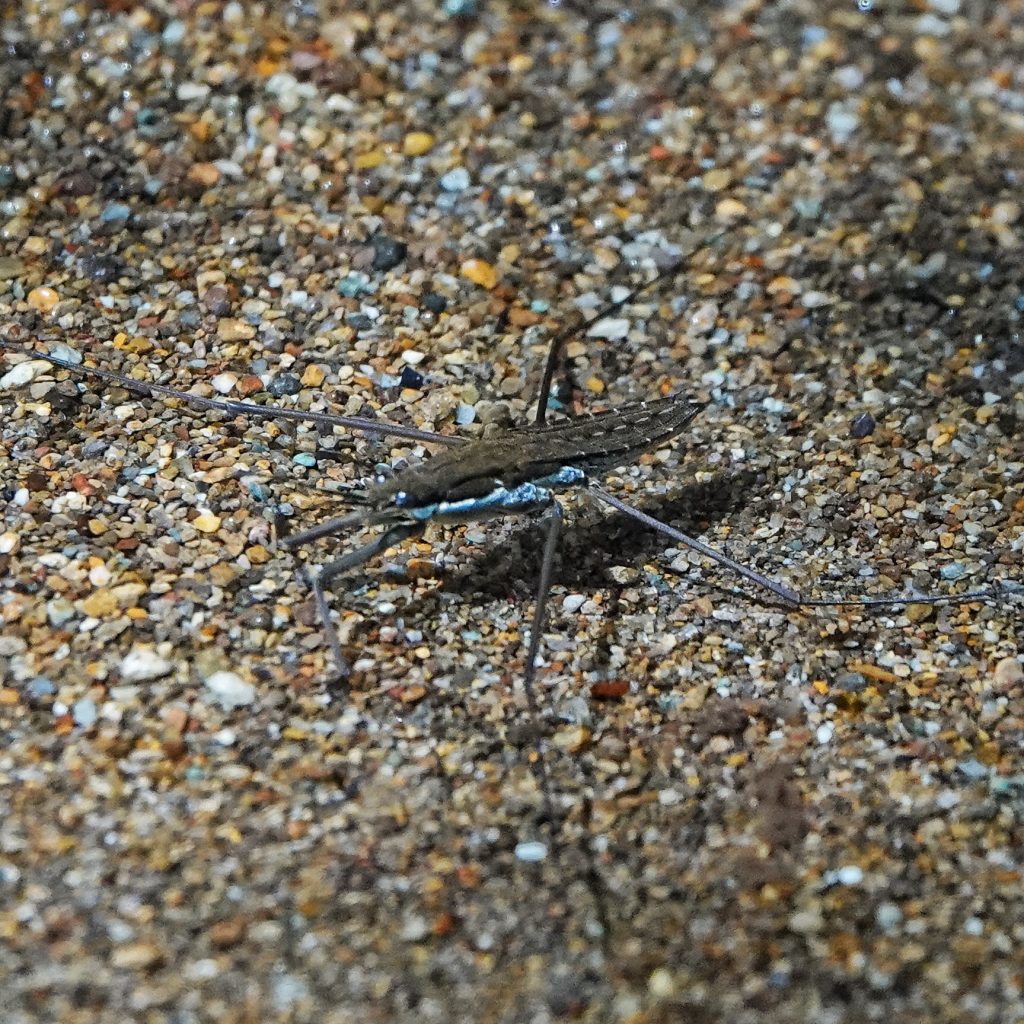
I’ve always been fascinated by these little critters, so it was great to read a more detailed write-up on them!
Thank you!
Hi — I don’t understand the shadow pattern that these creatures are making — the large shadow at the end of their back legs, and the two large round shadows near their head — I don’t see how their thin legs can make that large wedge shaped shadow in the back, for example. What am I missing?
Thanks.
Jennifer
The legs dimple the surface film, which makes the light refract differently and causes the shadow. That’s why it’s bigger and wider than the legs. The rear legs have more surface in the water, so a bigger dimple.
Ever notice the play of shadows on the bottom of a clear pool as waves ripple on the surface? That’s because the troughs and peaks of the waves act like lenses and create bright and dark areas that move across the bottom of the pool as the waves move. The legs of the insect slightly bend the surface of the water and so also make tiny lenses that create dark and bright areas — at least, that is my best guess as to what’s happening.
Yep, that’s what I was saying
I spent so much time watching them in the rivers of Tillamook County as a child. Loved this post!
Thank you!